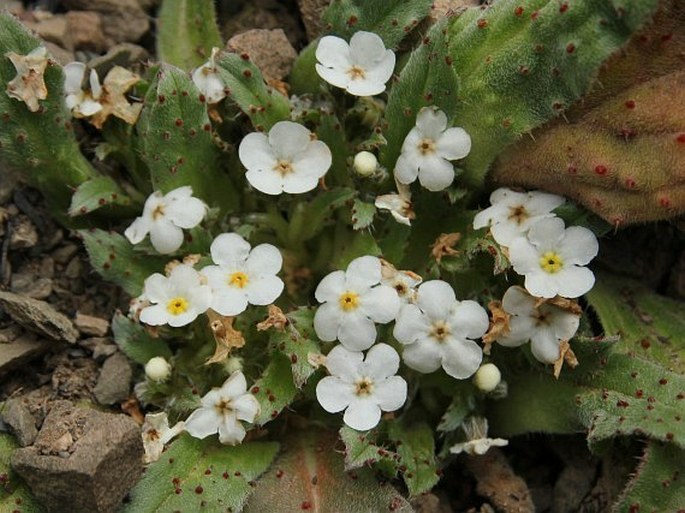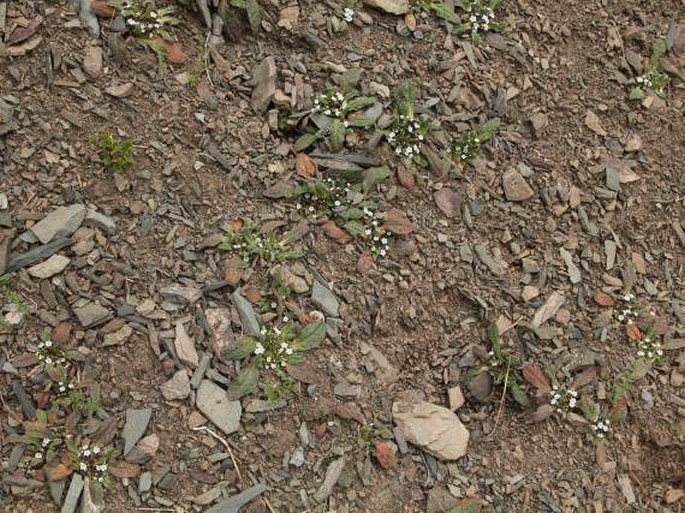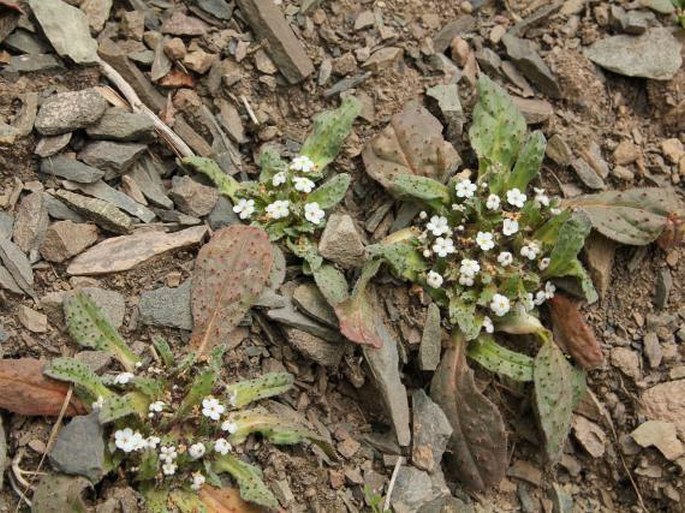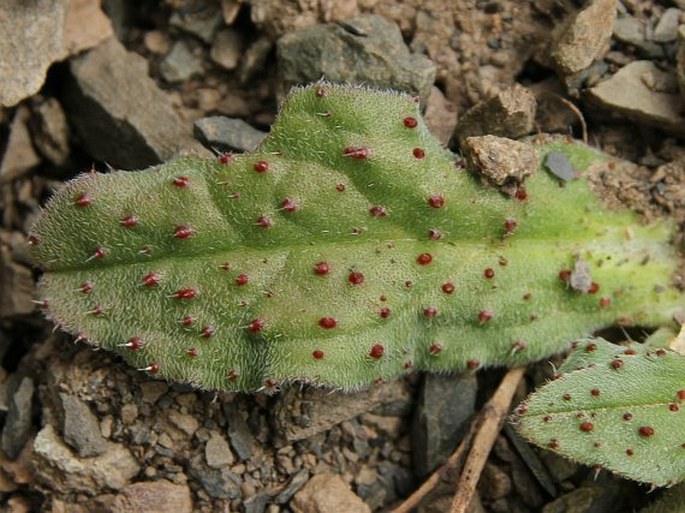Syn.: Microula benthamii C. B. Clarke
Family: Boraginaceae Juss.

Distribution: Western China (Qinghai, Xinjiang, Tibet), northern India and Nepal.
Ecology: It grows in rocky and sandy slopes, meadows, in lakeshore marshes, at elevations from 3500 to 5300 m.

Description: Biennial herbs, 1 cm tall, almost stemless with a rosette of leaves flat on ground and a very dense central cluster of flowering branches. Leaves prostrate, spatulate, 3–13 × 0.8–2.8 cm, base attenuate, margin undulate, apex rounded to obtuse, white bristly. Inflorescences terminal, forming dense headlike cluster; bracts linear, 0.2–2 cm long, pubescent; calyx 1.5 mm, to 3 mm in fruit, lobes narrowly triangular, sparsely pubescent outside, ciliate along margin; corolla blue or white, glabrous, tube to 1.2 mm long, limb 1.2–4 mm wide, lobes orbicular-ovate. The fruits are nutlets, 2–2.5 mm long.
Note: The genus Microula contains about 29 species from northern India, Bhutan, Nepal and China.



These images were taken in India, Ladakh, from Shang to Hemis (by Jindřich Houska, July 24, 2013).


